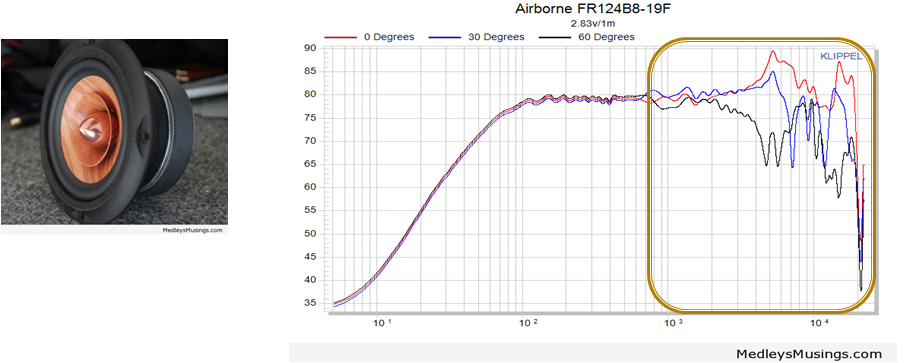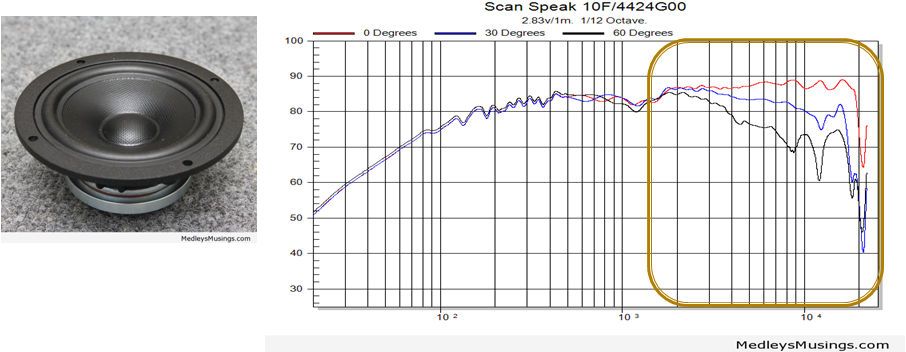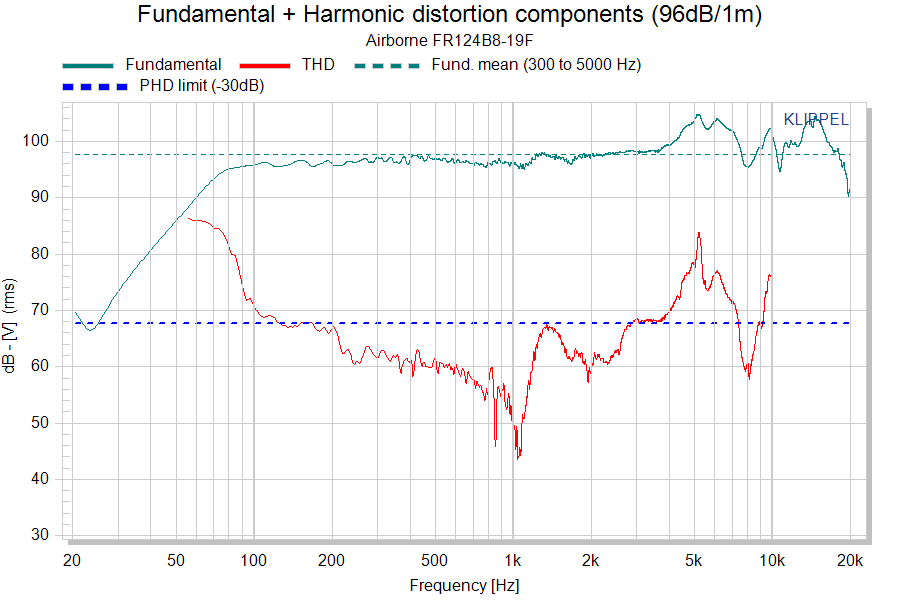Distortion:
There are two types of distortion:
Linear:
Any divergence from flat in the frequency response would be considered a form of linear distortion.
No driver is completely flat. Though, typically below the beaming point, drivers are fairly flat.
Outside of beaming is where breakup occurs and is typically the area where linearity in response is compromised.
Does not change with volume.
This is typically used to determine low-pass values as cone break-up is the worst offender after the beaming point.
Below is an example of poor linear performance. Notice after the beaming point of this 4” fullrange driver how it’s on and off-axis measurements differ?
Below is an example of good linear performance. Notice after the beaming point of this 4” driver how it’s on and off-axis measurements follow the same trend?
Non-Linear:
Distortion that changes with volume.
Referred to as harmonic distortion, THD, etc.
This is typically used to determine your high-pass values.
While argued as to it’s merit of audibility, a good rule of thumb is to avoid the 3% THD range (Note:
3% THD is 30dB down from the fundamental).
Below is the measured distortion of a 4” fullrange driver. Note the THD has reached the 3% mark at about 150hz. In addition, high frequency breakup exceeds 3% THD at approximately 3khz.



No comments:
Post a Comment